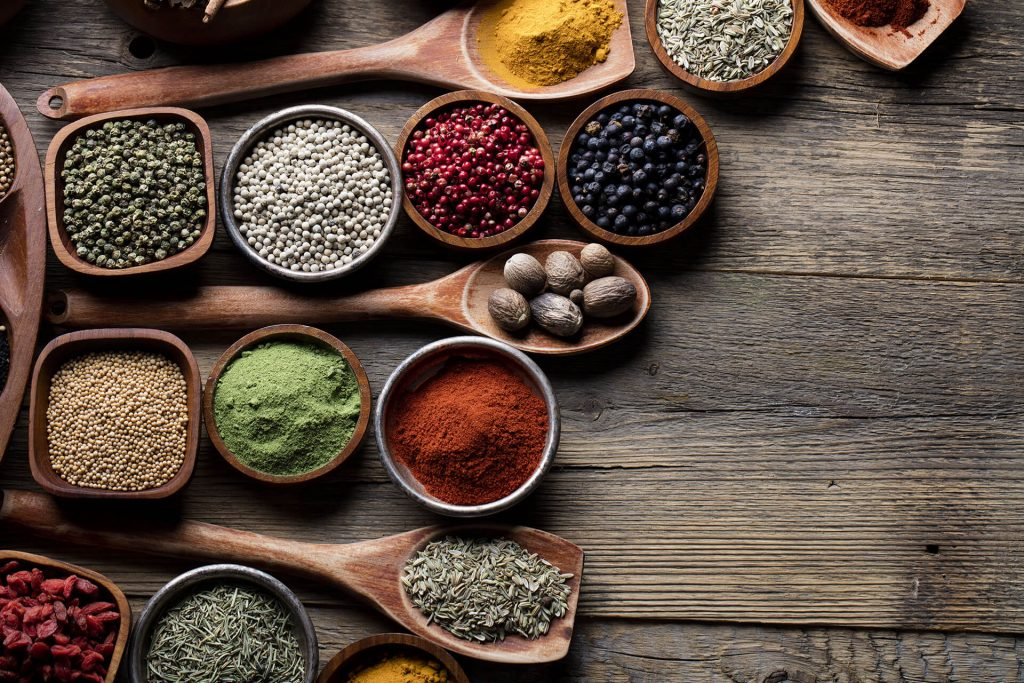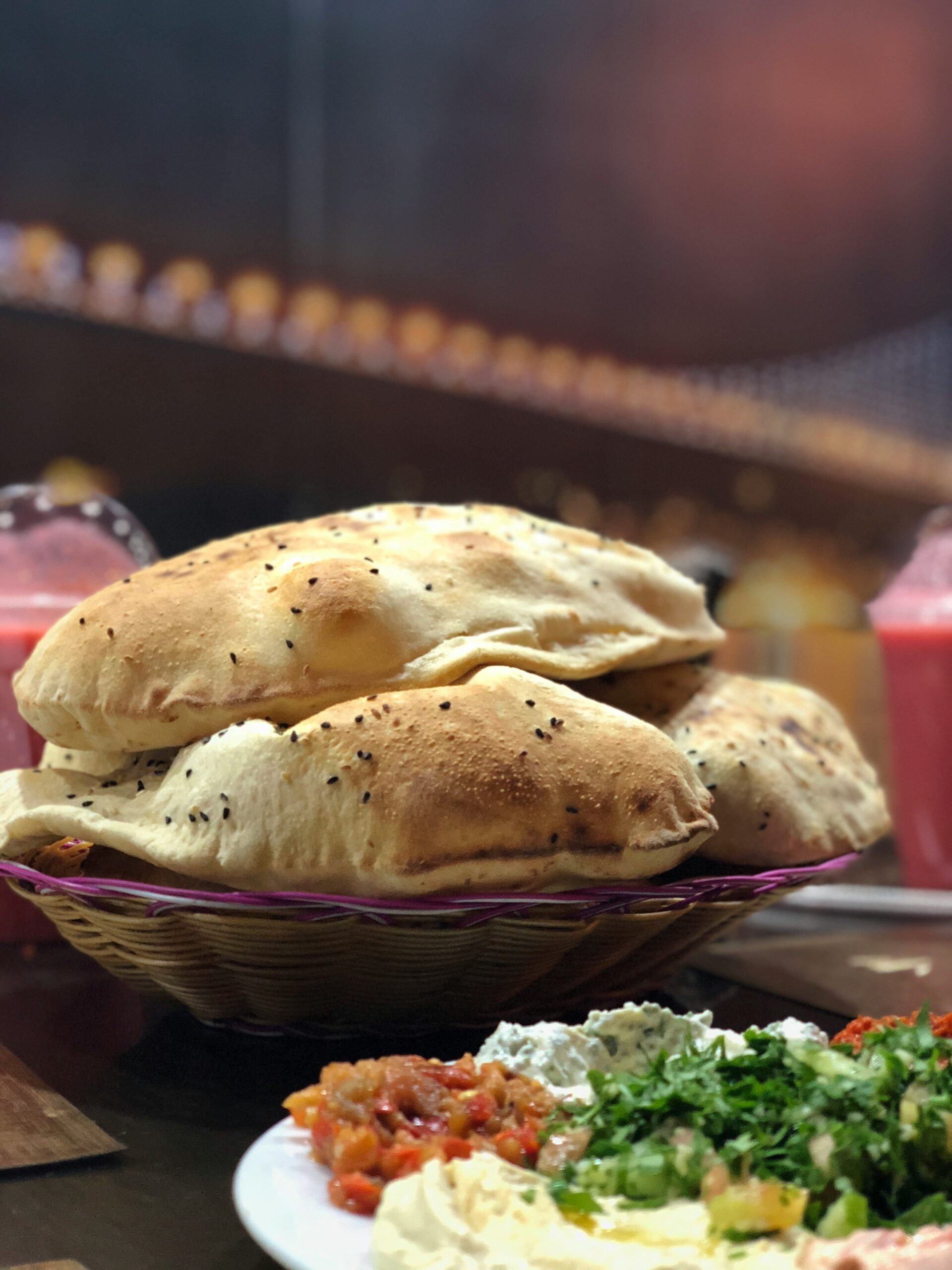Saudi Arabia has a history rooted deeply in the spice trade, which has shaped its culinary culture and identity for centuries. The region played a central role in ancient trade networks, often called the Incense Route or Frankincense Trail, which connected Asia, Africa, and Europe. Caravans loaded with cinnamon, cloves, nutmeg, saffron, and cardamom made their way across the Arabian deserts, which enriched the local culture and the economy.
Ports like Jeddah and Yanbu bustled with merchants who exchanged not only spices but also culinary knowledge and techniques that became integral to Saudi cuisine. These traditional Saudi flavors are a reflection of Saudi Arabia’s rich heritage. From the coffee spiced with cardamom to dishes infused with saffron, each flavor offers you a taste of the region’s history and warmth.
Flavors and Spices of Saudi Arabia
Let’s explore some of the most essential flavors and spices of Saudi Arabia to get a deeper look into the dishes and aromas that make traditional Saudi cuisine unique.
Cardamom – The Heart of Saudi Hospitality
In Saudi Arabia, cardamom—locally known as “hail”—is an essential part of hospitality. You’ll find it most commonly in Arabic coffee, or “qahwa,” which is often served to guests as a welcoming gesture.
Cardamom’s warm, spicy aroma, with a touch of sweetness, gives Arabic coffee a flavor that’s smooth yet bold, pairing perfectly with the slight bitterness of the beans. Almost everywhere you go in Saudi Arabia you will find the air filled with cardamom’s earthy scent and get a chance to enjoy this aromatic coffee sip-by-sip in a traditional Saudi majlis, a social gathering space.
Typically, hosts crush whole cardamom pods to release their oils into the coffee, creating a rich and fragrant brew. Beyond coffee, cardamom is used in both desserts and savory dishes, adding warmth and a hint of sweetness to the Saudi food. This spice embodies the warmth and welcoming spirit of Saudi culture, and you can not miss out on this when visiting Saudi Arabia.
Saffron – A Celebratory Touch
Saffron is one of the world’s most valuable spices, and in Saudi Arabia, it’s reserved for special occasions and festive dishes. This spice has a light, sweet aroma and a golden hue that transforms dishes both visually and in flavor. Saffron is frequently used in kabsa and mofatah, where it gives the rice a soft yellow color and a subtle, floral taste.
This prized spice is a symbol of Saudi hospitality. When hosts serve you traditional Saudi dishes laced with saffron, it shows respect and appreciation for their guests. Even a single thread of saffron adds a distinct taste and color, that makes it a highlight of Saudi celebrations and gatherings. The sight of saffron-infused rice served in a beautifully patterned dish, the golden grains gleaming under soft lights is all you need to have a wholesome Saudi culinary experience.
Black Lime – Burst of Citrus in Every Dish
Black lime, or “loomi,” is a unique ingredient in Saudi Arabian cuisine. Dried under the desert sun, these limes add a tangy, earthy taste with a hint of bitterness that balances hearty Saudi dishes. You’ll find loomi in maraq (Saudi stew) and kabsa, where it brings a bright, slightly smoky flavor that enhances meats and stews.
The distinct taste of black lime offers a refreshing citrus note that complements the rich flavors of traditional Saudi dishes. If you enjoy layered flavors, black lime will provide you an unforgettable taste of the Saudi food.
Rosewater – A Sweet Floral Essence
Rosewater is a delicate yet distinct flavoring used in Saudi sweets and beverages. With its sweet, floral aroma, rosewater adds a gentle touch to traditional desserts like basbousa and ma’amoul. The fragrance is light and calming, bringing a unique taste that feels luxurious and familiar.
Beyond desserts, rosewater is also added to tea or mixed with water for a refreshing drink, especially on warm days. Its presence in Saudi homes symbolizes tradition and hospitality, which makes it a memorable addition to the local cuisine.
Sumac – A Tart Spice in Middle Eastern Dishes
Sumac is a dark red powder with a lemony, tangy flavor, often sprinkled over salads and grilled meats. This spice brings out the brightness in dishes like fattoush and complements the savory richness of grilled lamb.
Known for its high antioxidant content, sumac not only adds a burst of color to meals but also balances flavors with its acidity. This versatile spice has become a popular way to add a light, refreshing taste to Saudi dishes, especially in the warmer regions.
Cinnamon – A Warm and Comforting Spice
Cinnamon is well-loved in Saudi Arabian cuisine for its sweet and woody aroma. Its warmth enhances desserts, teas, and spiced drinks and creates a cozy, inviting flavor. You’ll often find it in rice puddings and spiced teas or paired with meats to add depth to savory dishes.
It is a staple in Saudi households. Cinnamon’s gentle sweetness adds balance to the rich flavors in various dishes. Whereas, its aroma and taste create an experience that is comforting. The flavors of this spice reflect the warm, communal nature of Saudi culinary traditions.
Cloves – A Strong Spice with a Sweet Note
Cloves are tiny yet powerful in flavor. They add a sweet and spicy intensity to Saudi food. Used sparingly in dishes like kabsa and stews, cloves provide a distinct, earthy undertone that enhances the other spices in a dish.
When added to rice and meats, cloves introduce a subtle depth that makes each bite more aromatic. This spice is an excellent example of the Saudi skill in balancing intense flavors, making dishes layered, flavorful, and memorable.
The Timeless Flavors of Saudi Arabia
The timeless flavors and spices of Saudi Arabia offer you a peek into the country’s history and hospitality. From the welcoming aroma of cardamom coffee to the golden hues of saffron rice, these spices are a part of Saudi identity. When you’re enjoying Saudi cuisine you are connecting with the stories and traditions that shape the Kingdom’s vibrant culture.
Saudi Arabian spices and traditional flavors go way beyond seasoning. They celebrate the history, landscape, and creativity of the region. Embrace the chance to taste these unique flavors. Each one brings you closer to the heart of Saudi Arabia.













